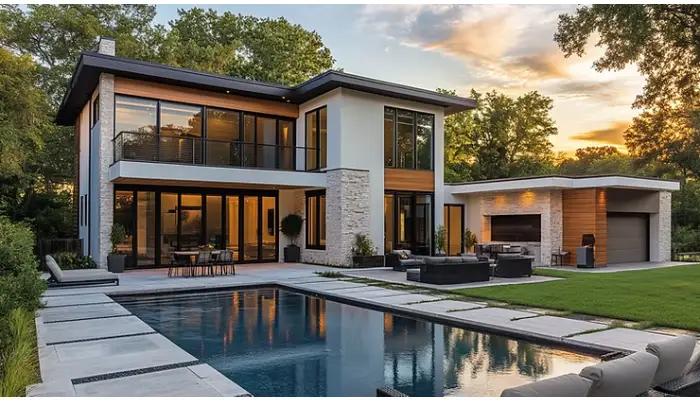The Psychology Behind Exterior Rendering: Why Visuals Influence Real Estate Decisions?
In the ever-evolving world of real estate and architecture, first impressions can make or break a deal. But what defines that first impression in today’s digital era? Increasingly, it’s the rendering — especially exterior rendering — that shapes a viewer’s perception before they’ve even stepped on the property.
Beyond aesthetics and marketing polish, exterior renderings tap into deep-rooted psychological patterns. They don’t just show what a building looks like — they communicate emotion, intention, and identity. This article explores the intersection of psychology and exterior rendering, uncovering how high-quality visualizations guide decisions in real estate, design, and beyond.
1. Why the Human Brain Responds to Renderings?
Visuals are processed 60,000 times faster than text by the human brain. This explains why potential buyers, investors, or even community planners are drawn immediately to visual representations of architecture — even before floor plans or specs.
With exterior rendering, the brain is especially reactive because it instinctively reads outdoor elements — sunlight angles, landscaping, materials, and even shadows — as cues for comfort, safety, and desirability. A well-rendered facade with greenery, natural light, and proportionate design can evoke a subconscious sense of belonging.
Key takeaway: Renderings don’t just display a space — they trigger gut reactions that influence decisions.

2. Storytelling Through Architecture: Exterior Renderings as Narrative Tools
Every architectural design tells a story. The orientation, style, and texture of a building exterior convey messages — about lifestyle, culture, or function. The role of exterior rendering is to amplify and clarify that story visually.
For instance, a modern minimalist home with clean lines and neutral palettes in a rendering suggests sophistication and simplicity. A traditional craftsman facade surrounded by trees may imply warmth, family, and roots. This ability to tell a story in one still image makes exterior rendering a powerful communication tool — especially in collaborative design environments.
Brands like RENDEREXPO, which prioritize client input, harness storytelling not just as a design tool but as a feedback loop, ensuring the rendered narrative aligns with the client’s vision.
3. Trust and Transparency: Rendering as a Trust-Building Mechanism
In many client-architect relationships, miscommunication is a common hurdle. Clients without technical backgrounds often struggle to interpret 2D plans or jargon-heavy documentation. That’s where exterior rendering bridges the gap.
When stakeholders are presented with photorealistic visuals early in the project timeline, it builds transparency and trust. They see not only what the structure will look like but how it will sit in its environment, how materials will interact with lighting, and what ambiance the final result may convey.
This clarity reduces last-minute changes, surprises, and even budget overruns. It promotes inclusion and shared vision, values that modern rendering studios — especially those with a client-first approach — actively champion.
4. Cultural and Emotional Context in Exterior Rendering
Design doesn’t exist in a vacuum. It’s shaped by the culture, geography, and psychology of its audience. Exterior renderings that ignore context risk becoming generic or even alienating.
For example, a coastal villa designed for Florida should evoke openness, breeze, and leisure, while an urban apartment in New York might focus on modern materials and skyline views. Incorporating localized emotional cues in exterior rendering makes the design feel personal and aspirational.
Top rendering firms understand this. They interpret both visual cues and emotional triggers to create images that speak directly to their target audience — whether it’s homebuyers, investors, or the community.
5. Future-Proofing Design Decisions with Visual Simulation
Exterior rendering isn’t just about present aesthetics — it’s a tool for future visualization. Advanced renderings simulate environmental conditions: how the facade changes throughout the day, how seasons affect the mood, or how street elements evolve with development.
This allows stakeholders to preemptively identify design flaws and optimize the exterior not only for beauty but also functionality. In urban planning or large-scale developments, these simulations provide insight into pedestrian flow, neighborhood fit, and visual impact, long before construction begins.
By incorporating realistic details and collaborative feedback, the rendering process becomes a dynamic problem-solving tool rather than a static showcase.
Conclusion
Exterior rendering has evolved from a mere marketing asset into a psychological, narrative, and strategic tool. Its power lies in more than just its visual appeal — it speaks to our emotions, influences our perceptions, and bridges the communication divide between designers and stakeholders.
For designers, architects, and creative teams who aim to put clients at the center of the process, mastering the art and psychology of exterior rendering is no longer optional — it’s essential. As rendering technology advances, the firms that blend visual storytelling with client collaboration will lead the future of design communication.
Resource URl:
https://en.wikipedia.org/wiki/External_render
https://www.renderexpo.com/exterior-design-and-rendering

Marin Hùng, a passionate advocate for holistic well-being, is the driving force behind our health-focused platform. With a deep-rooted commitment to promoting a balanced and vibrant lifestyle, Marin brings a wealth of knowledge and experience to our health community. As a dedicated writer and wellness enthusiast, Marin’s insightful articles and expertise are at the heart of our mission to inspire healthier living.















Post Comment